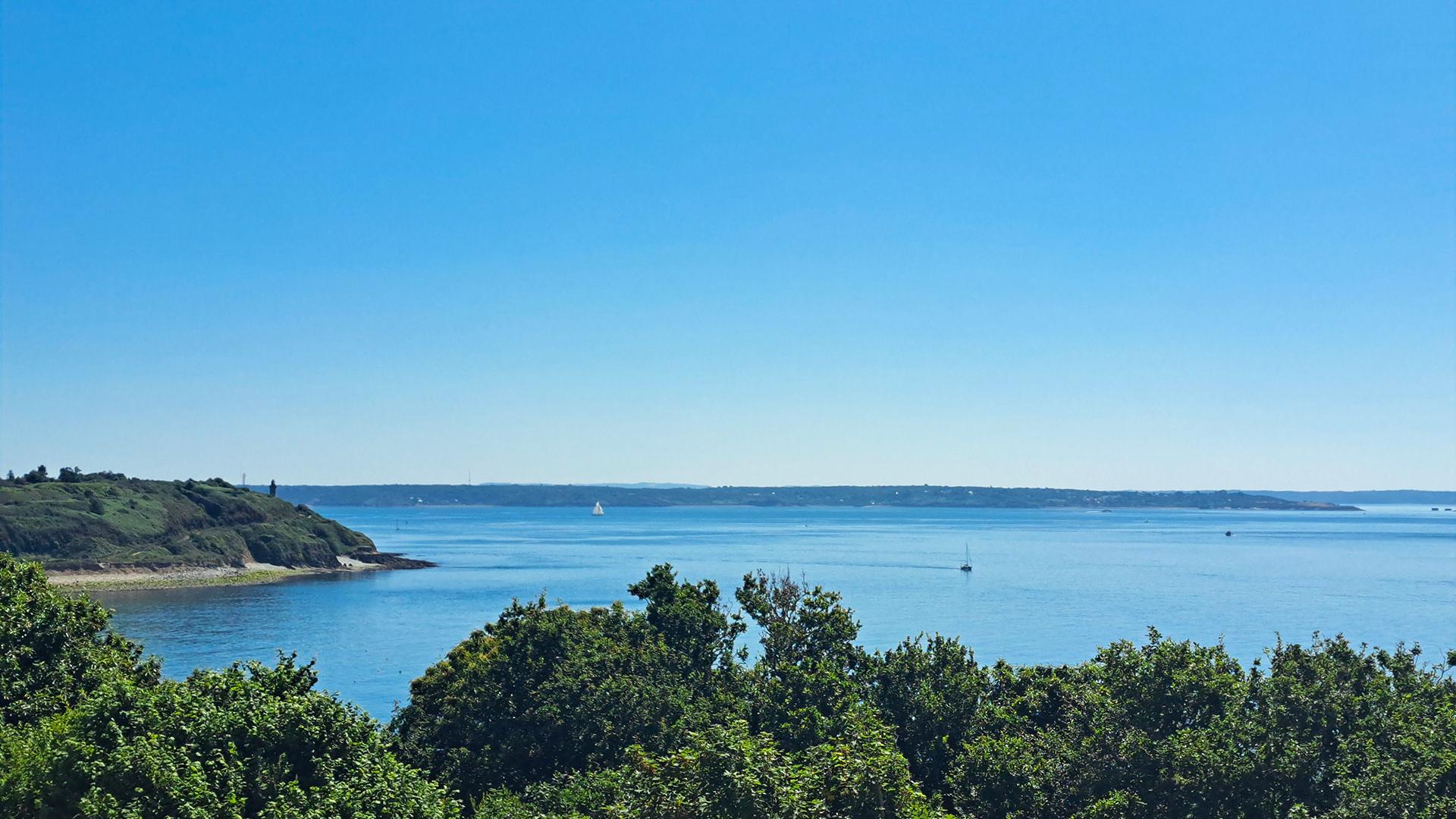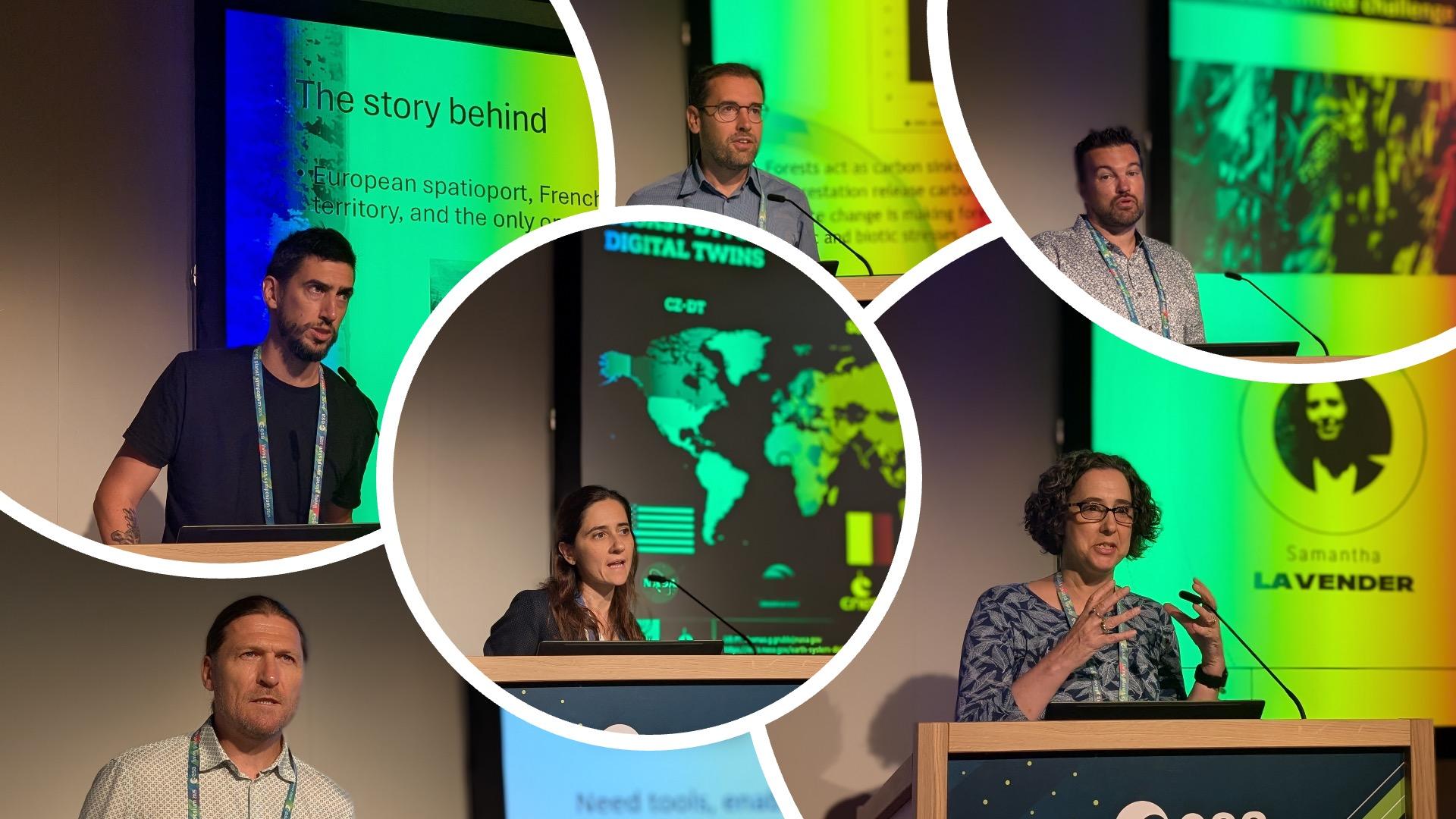13th meeting of SCO France
As part of their biannual meeting, the members of SCO France held their 13th Inter-Organization Committee (IOC) on Thursday, July 10, 2025, in Plouzané. They were welcomed by Ifremer, which took this opportunity to sign the SCO Charter. After a morning of lively discussions, the afternoon was devoted to visits entirely dedicated to the ocean.
Learn more ➔A look back at CCAD French Guiana 2025
Held in French Guiana from June 3 to 5, 2025, the French Climate Change Adaptation Days (CCAD) brought together local players to develop strategies and fuel initiatives contributing to the region's climate change adaptation trajectory. The challenge was met, with over 200 participants from a wide range of professional and geographical backgrounds!
Learn more ➔Monitoring our oceans
Essential to life on Earth, a major player in climate change and human activity, the ocean deserves our full attention. On every continent, the SCO supports sentinel projects, three of which came together on 1 July 2025 for the first ClimateSCOpe. Replay.
Learn more ➔WACA-VAR in the field
It's a fact that West African coastlines are particularly vulnerable to the impacts of climate change. They also suffer from a lack of in situ data, which is why WACA-VAR is testing the added value of satellite data for risk assessment. Having just returned from two measurement campaigns, the team is delighted with the excellent correlations with calculations derived from satellite data, enabling them to confidently engage the online visualization tool.
Learn more ➔SCO at LPS 2025: from data to climate action
From June 23 to 27, 2025, the Living Planet Symposium (LPS), organized in Vienna by the European Space Agency (ESA), brought together thousands of participants around the theme "From Observation to Climate Action and Sustainability for Earth". With its strong presence, the SCO confirmed its role as a collective catalyst, capable of linking science, technology, territories and international cooperation.
Learn more ➔3 projects, 3 environments, 1 lever: satellite data
What do oceans, mountains and the atmosphere have in common? Earth observation satellites, of course! From their privileged position, generally between 500 and 600 km above our heads, their sensors take the pulse of all the components of the planet. On Thursday June 19, 2025, three SCO projects using this data in different environments presented their remarkable solutions at the 17th “SCO France Quarterly Meeting”.
Learn more ➔Welcome aboard SCOdyssey
Futuristic and poetic, rooted in reality but dreamlike, SCOdyssey is an adventure like no other. Come aboard our ship and teleport yourself into an enchanted world, to meet the guardians of the four elements and their SCOlutions.
Learn more ➔UNOC 2025: SCO at the World Deltas Summit
Covering 71% of our planet, the ocean absorbs the majority of global warming, at the expense of its biodiversity and the resources it provides. Towards a better and necessary protection of our Big Blue, the 3rdUnited Nations Ocean Conference brought together representatives from all over the world in June 2025. In particular, the SCO took part in the World Deltas Summit.
Learn more ➔QVX-PF, power made TAHATAI Neo
By announcing new functions for their tool, they piqued our curiosity. By putting us in the shoes of users of the QVX-PF platform and then introducing us to VEESAT, they won us over. We tell you all about it!
Learn more ➔SCO International: 2025 Edition
With an ever-increasing commitment, the SCO has accredited 12 new international projects. These will be supported by 5 national SCOs - China, Norway, Philippines, United Kingdom, Thailand - and 2 international organizations.
Learn more ➔-
IOC 13
13th meeting of SCO France
As part of their biannual meeting, the members of SCO France held their 13th Inter-Organization Committee (IOC) on Thursday, July 10, 2025, in Plouzané. They were welcomed by Ifremer, which took this opportunity to sign the SCO Charter. After a morning of lively discussions, the afternoon was devoted to visits entirely dedicated to the ocean.
Learn more ➔CCAD French GuianaA look back at CCAD French Guiana 2025
Held in French Guiana from June 3 to 5, 2025, the French Climate Change Adaptation Days (CCAD) brought together local players to develop strategies and fuel initiatives contributing to the region's climate change adaptation trajectory. The challenge was met, with over 200 participants from a wide range of professional and geographical backgrounds!
Learn more ➔ClimateSCOpe 1Monitoring our oceans
Essential to life on Earth, a major player in climate change and human activity, the ocean deserves our full attention. On every continent, the SCO supports sentinel projects, three of which came together on 1 July 2025 for the first ClimateSCOpe. Replay.
Learn more ➔WACA-VARWACA-VAR in the field
It's a fact that West African coastlines are particularly vulnerable to the impacts of climate change. They also suffer from a lack of in situ data, which is why WACA-VAR is testing the added value of satellite data for risk assessment. Having just returned from two measurement campaigns, the team is delighted with the excellent correlations with calculations derived from satellite data, enabling them to confidently engage the online visualization tool.
Learn more ➔LPS 2025SCO at LPS 2025: from data to climate action
From June 23 to 27, 2025, the Living Planet Symposium (LPS), organized in Vienna by the European Space Agency (ESA), brought together thousands of participants around the theme "From Observation to Climate Action and Sustainability for Earth". With its strong presence, the SCO confirmed its role as a collective catalyst, capable of linking science, technology, territories and international cooperation.
Learn more ➔Quarterly 173 projects, 3 environments, 1 lever: satellite data
What do oceans, mountains and the atmosphere have in common? Earth observation satellites, of course! From their privileged position, generally between 500 and 600 km above our heads, their sensors take the pulse of all the components of the planet. On Thursday June 19, 2025, three SCO projects using this data in different environments presented their remarkable solutions at the 17th “SCO France Quarterly Meeting”.
Learn more ➔SCOdysseyWelcome aboard SCOdyssey
Futuristic and poetic, rooted in reality but dreamlike, SCOdyssey is an adventure like no other. Come aboard our ship and teleport yourself into an enchanted world, to meet the guardians of the four elements and their SCOlutions.
Learn more ➔UNOC 2025UNOC 2025: SCO at the World Deltas Summit
Covering 71% of our planet, the ocean absorbs the majority of global warming, at the expense of its biodiversity and the resources it provides. Towards a better and necessary protection of our Big Blue, the 3rdUnited Nations Ocean Conference brought together representatives from all over the world in June 2025. In particular, the SCO took part in the World Deltas Summit.
Learn more ➔













